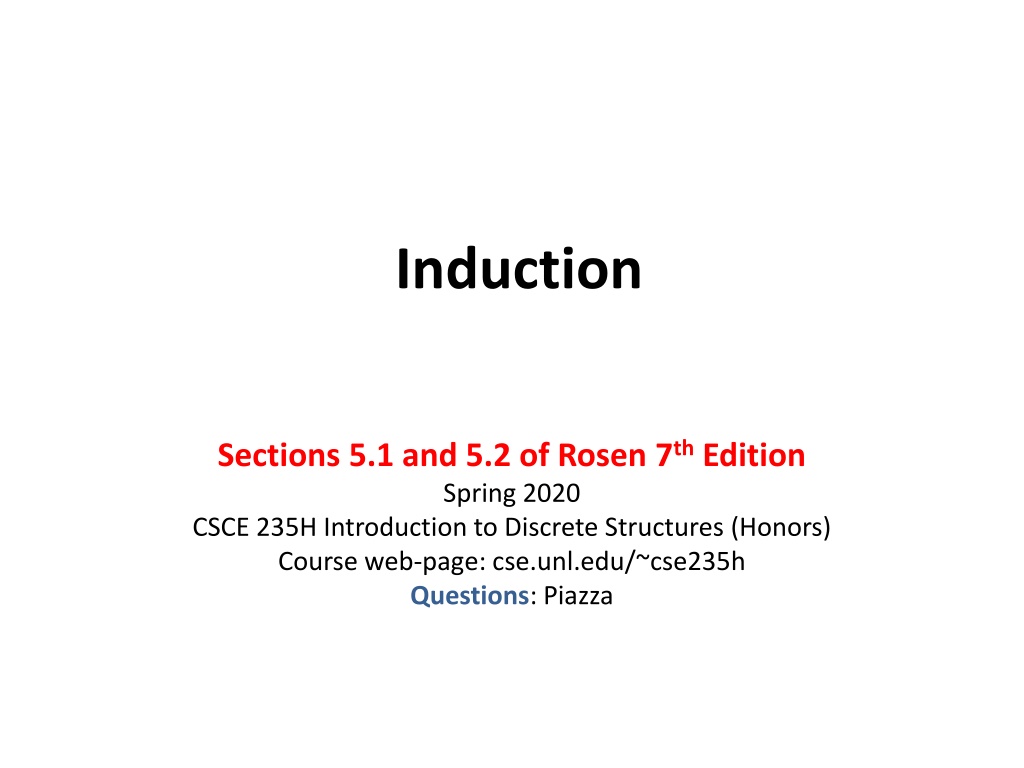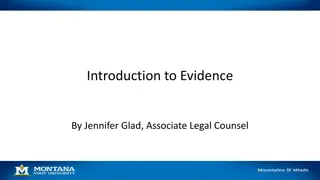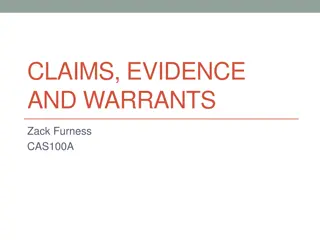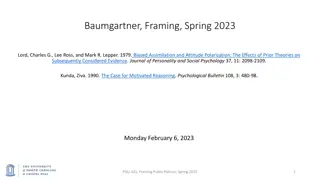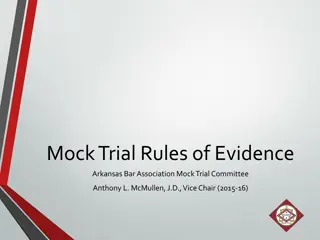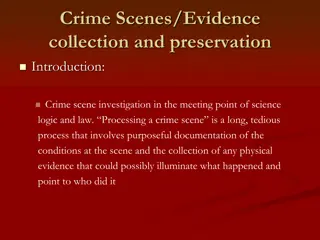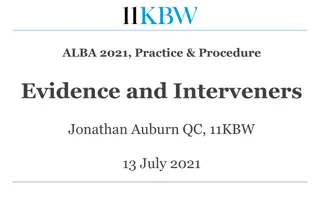Visual Presentation of Evidence and Themes
This content showcases a series of image slides illustrating evidence from the text along with associated themes. Each slide presents a visual representation of key elements from the text, enhancing understanding and analysis. The slides offer a creative perspective on interpreting text-based evidence and themes, making the content engaging and informative for viewers.
Download Presentation

Please find below an Image/Link to download the presentation.
The content on the website is provided AS IS for your information and personal use only. It may not be sold, licensed, or shared on other websites without obtaining consent from the author.If you encounter any issues during the download, it is possible that the publisher has removed the file from their server.
You are allowed to download the files provided on this website for personal or commercial use, subject to the condition that they are used lawfully. All files are the property of their respective owners.
The content on the website is provided AS IS for your information and personal use only. It may not be sold, licensed, or shared on other websites without obtaining consent from the author.
E N D
Presentation Transcript
Induction Sections 5.1 and 5.2 of Rosen 7thEdition Spring 2020 CSCE 235H Introduction to Discrete Structures (Honors) Course web-page: cse.unl.edu/~cse235h Questions: Piazza
Outline Motivation What is induction? Viewed as the Well-Ordering Principle Viewed as Universal Generalization Formal Statement 6 Examples Strong Induction Definition Examples: decomposition into product of primes, gcd 2 CSCE 235 Induction
Motivation How can we prove the following proposition? x S P(x) For a finite set S={s1,s2, ,sn}, we can prove that P(x) holds for each element because of the equivalence P(s1) P(s2) P(sn) For an infinite set, we can try to use universal generalization Another, more sophisticated way is to use induction 3 CSCE 235 Induction
What Is Induction? If a statement P(n0) is true for some nonnegative integer say n0=1 Suppose that we are able to prove ? ?0 ? ? ?(? + 1) It follows from these two statement that P(n) is true for all n n0, that is ? ?0 ?(?) The above is the basis of induction, a widely used proof technique and a very powerful one 4 CSCE 235 Induction
The Well-Ordering Principle Why induction is a legitimate proof technique? At its heart, induction is the Well Ordering Principle Theorem: Principle of Well Ordering. Proof by contradiction shows that the set of ? ?0 for which ?(?) is false is empty We can prove that the following are equivalent: The well-ordering principle Mathematical induction (weak form) Mathematical induction (strong form) 5 CSCE 235 Induction
Another View To look at it in another way, assume that the following statements hold (1) ?(??) (2) ? ? ?(? + 1) We can now use a form of universal generalization as follows Say we choose an element ? of the UoD. We wish to establish that ?(?) is true. If ? = ?0, then we are done Otherwise, we apply (2) above to get ? ?0 ?(?0+ 1),?(?0+ 1) ?(?0+ 2), ?(?0+ 2) ?(?0+ 3), ,?(? 1) ?(?) Via a finite number of steps (? ?0) we get that ?(?) is true. Because c is arbitrary, the universal generalization is established and ? ?0 ?(?) 6 CSCE 235 Induction
Outline Motivation What is induction? Viewed as: the Well-Ordering Principle, Universal Generalization Formal Statement 6 Examples Strong Induction Definition Examples: decomposition into product of primes, gcd 7 CSCE 235 Induction
Induction: Formal Definition (1) Theorem: Principle of Mathematical Induction Given a statement P concerning the integer n, suppose 1. P holds for a particular integer ?0, ?(?0) = 1 2. If P is true for some particular integer ? ?0then it is true for ? + 1: ?(?) ?(? + 1) Then P is true for all integers ? ?0, that is ? ?0 ?(?) is true 8 CSCE 235 Induction
Induction: Formal Definition (2) Showing that P(n0) holds for some initial integer n0 is called the basis step In ?(?) ?(? + 1) The assumption P(k) is called the inductive hypothesis Showing the implication ?(?) ?(? + 1) for every ? ?0is called the inductive step Together, they are used to define mathematical induction Induction is expressed as an inference rule [?(?0) ( ? ?0 ?(?) ?(? + 1)] ? ?0 ?(?) Inductive hypothesis Basis step Inductive step 9 CSCE 235 Induction
Steps ? ?0 ?(?) ?(?0) 1. Form the general statement 2. Form and verify the base step 3. Form the inductive hypothesis 4. Prove the inductive step ? ? P(? + 1) ?(?) 10 CSCE 235 Induction
Example A (1) Prove that ?2 2?for all ? 5 using induction We formalize the statement ? ? : ?2 2? Our basis case is for ? = 5. We directly verify that 25 = 52 25 = 32 so ?(5) is true and thus the basic step holds We need now to perform the inductive step 11 CSCE 235 Induction
Example A (2) Assume P(k) holds (the inductive hypothesis). Thus, ?2 2? Now, we need to prove the inductive step. For all ? 5, ? + 12 = ?2+ 2? + 1 < ?2 + 2? + ? (because ? 5 > 1) < ?2+ 3? < ?2+ ? ? (because ? 5 > 3) < ?2+ ?2 = 2?2 Using the inductive hypothesis (?2 2k), (? + 1)2 < 2?2 2 2?= 2?+1 Thus, ?(? + 1) holds 12 CSCE 235 Induction
Example B (1) Prove that for any n 1, i=1n (i2) = n(n+1)(2n+1)/6 The basis case is easily verified 12=1= 1(1+1)(2+1)/6 We assume that P(k) holds for some k 1, so i=1k (i2) = k(k+1)(2k+1)/6 We want to show that P(k+1) holds, that is i=1k+1 (i2) = (k+1)(k+2)(2k+3)/6 We rewrite this sum as i=1k+1 (i2) = 12+22+..+k2+(k+1)2 = i=1k (i2) + (k+1)2 13 CSCE 235 Induction
Example B (2) We replace i=1k (i2) by its value from the inductive hypothesis i=1k+1 (i2) = i=1k (i2) + (k+1)2 = k(k+1)(2k+1)/6 + (k+1)2 = k(k+1)(2k+1)/6 + 6(k+1)2/6 = (k+1)[k(2k+1)+6(k+1)]/6 = (k+1)[2k2+7k+6]/6 = (k+1)(k+2)(2k+3)/6 Thus, we established that P(k) P(k+1) Thus, by the principle of mathematical induction we have n 1, i=1n (i2) = n(n+1)(2n+1)/6 14 CSCE 235 Induction
Example C (1) Prove that for any integer n 1, 22n-1 is divisible by 3 Define P(n) to be the statement 3 | (22n-1) We note that for the basis case n=1 we do have P(1) 22 1-1 = 3 is divisible by 3 Next we assume that P(k) holds. That is, there exists some integer u such that 22k-1 = 3u We must prove that P(k+1) holds. That is, 22(k+1)-1 is divisible by 3 15 CSCE 235 Induction
Example C (2) Note that: 22(k+1) 1 = 2222k -1=4.22k -1 The inductive hypothesis: 22k 1 = 3u 22k = 3u+1 Thus: 22(k+1) 1 = 4 22k -1 = 4(3u+1)-1 = 12u+4-1 = 12u+3 = 3(4u+1), a multiple of 3 We conclude, by the principle of mathematical induction, for any integer n 1, 22n-1 is divisible by 3 16 CSCE 235 Induction
Example D Prove that n! > 2n for all n 4 The basis case holds for n=4 because 4!=24>24=16 We assume that k! > 2k for some integer k 4 (which is our inductive hypothesis) We must prove the P(k+1) holds (k+1)! = k! (k+1) > 2k (k+1) Because k 4, k+1 5 > 2, thus (k+1)! > 2k (k+1) > 2k 2 = 2k+1 Thus by the principal of mathematical induction, we have n! > 2n for all n 4 17 CSCE 235 Induction
Example E: Summation Show that i=1n (i3) = ( i=1n i)2 for all n 1 The basis case is trivial: for n =1, 13 = 12 The inductive hypothesis assumes that for some n 1 we have i=1k (i3) = ( i=1k i)2 We now consider the summation for (k+1): i=1k+1 (i3) = ( i=1k i)2 + (k+1)3= ( k(k+1)/2 )2 + (k+1)3 = ( k2(k+1)2 + 4(k+1)3 ) /22= (k+1)2 (k2 + 4(k+1) ) /22 = (k+1)2 ( k2 +4k+4 ) /22= (k+1)2 ( k+2)2 /22 = ((k+1)(k+2) / 2) 2 Thus, by the PMI, the equality holds 18 CSCE 235 Induction
Example F: Derivatives Show that for all n 1 and f(x)= xn, we have f (x)= nxn-1 Verifying the basis case for n=1: f (x) = limh 0 (f(x0+h)-f(x0)) / h = limh 0 ((x0+h)1-(x01)) / h = 1 = 1 x0 Now, assume that the inductive hypothesis holds for some k, f(x) = xk, we have f (x) = kxk-1 Now, consider f2(x) = xk+1=xk x Using the product rule: f 2(x) = (xk) x+(xk) x Thus, f'2(x) = kxk-1 x + xk 1 = kxk + xk = (k+1)xk 19 CSCE 235 Induction
Steps ? ?0 ?(?) ?(?0) 1. Form the general statement 2. Form and verify the base step 3. Form the inductive hypothesis 4. Prove the inductive step ? ? P(? + 1) ?(?) 20 CSCE 235 Induction
The Bad Example: Example G Consider the proof for: All of you will receive the same grade Let P(n) be the statement: Every set of n students will receive the same grade ?, ? = ? ? ? : ?1,?2 ?,?? ?1 = ??(?2) Clearly, P(1) is true. So the basis case holds Now assume P(k) holds, the inductive hypothesis Given a group of k students, apply ?(?) to {?1,?2, ,??} Now, separately apply the inductive hypothesis to the subset {?2,?3, ,??+1} Combining these two facts, we get {?1,?2, ,??+1}. Thus, P(k+1) holds. Hence, P(n) is true for all students 21 CSCE 235 Induction
Example G: Where is the Error? The mistake is not the basis case: P(1) is true Also, it is the case that, say, P(73) P(74) So, this is cannot be the mistake The error is in P(1) P(2), which cannot hold 22 CSCE 235 Induction
Outline Motivation What is induction? Viewed as: the Well-Ordering Principle, Universal Generalization Formal Statement 6 Examples Strong Induction Definition Examples: decomposition into product of primes, gcd 23 CSCE 235 Induction
Principal of Mathematical Induction Basis step: ?(?0) holds Inductive step: ? ?0 ? ? ?(? + 1) PMI guarantees ? ?0 ?(?) ?(?0) ?(?) ?(? + 1) ?(?) ?(? + 1) ?0 ? ? ? + 1 ?0 ? ? + 1 24 CSCE 235 Induction
Strong Induction Theorem: Principle of Mathematical Induction (Strong Form) Given a statement P concerning an integer n, suppose 1. P is true for some particular integer n0, ? ?? = 1 2. If ? ?0is any integer and ?0 ? ? ? ? holds, then ? ? + 1 holds Then, ? ?0? ? holds ?(?0) ?(?) ?(?) ?(? + 1) ?0 ? ? ? + 1 25 CSCE 235 Induction
PMI and its Strong Form Despite the name, the strong form of PMI is not a stronger proof technique than PMI In fact, we have the following Lemma Lemma: The following are equivalent The Well Ordering Principle The Principle of Mathematical Induction The Principle of Mathematical Induction, Strong Form 26 CSCE 235 Induction
Strong Form: Example A (1) Fundamental Theorem of Arithmetic (page 211): Any integer n 2 can be written uniquely as A prime or As the product of primes Prove using the strong form of induction Definition (page 210) Prime: A positive integer p greater than 1 is called prime iff the only positive factors of p are 1 and p. Composite: A positive integer that is greater than 1 and is not prime is called composite According to the definition, 1 is not a prime 27 CSCE 235 Induction
Strong Form: Example A (2) 1. Let ? 2,?(?): ? is a prime or can be written uniquely as the product of primes. 2. Basis step: ?0= 2, 2 is a prime, ? 2 holds 28 CSCE 235 Induction
Strong Form: Example A (3) 3. Inductive hypothesis. We assume that ?0 ? ?,? ? = 1 ? 2 ? 3 ? ? is true ?(2) ?(.) ?(.) ?(?) 4. Show that ? ? + 1 holds. We consider two cases: ? + ? is prime, then ?(? + 1) holds. We are done. 2 ? ? ? ?(? + 1) ? + ? is a composite. k+1 has two factors ?,?, 2 ?,? < ? + 1 and ? + 1 = ? ? By the inductive hypothesis ? = primes. Thus, ? + 1 = ? ??, ? = ? ?? and ??,?? ? ?? ? ?? So, by the strong form of PMI, P(k+1) holds QED 29 CSCE 235 Induction
Strong Form: Example B (1) Notation: gcd(a,b): the greatest common divisor of a and b Example: gcd(27, 15)=3, gcd(35,28)=7 gcd(a,b)=1 a, b are mutually prime Example: gcd(15,14)=1, gcd(35,18)=1 Lemma: If a,b N are such that gcd(a,b)=1 then there are integers s,t such that gcd(a,b)=1=sa+tb Question: Prove the above lemma using the strong form of induction 30 CSCE 235 Induction
`Reminders Background knowledge: gcd(a,b)= gcd(a,b-a) Theorem Let a, b, and c be integers. Then If a|b and a|c then a|(b+c) If a|b then a|bc for all integers c If a|b and b|c, then a|c Corrollary: If a, b, and c are integers such that a|b and a|c, then a|mb+nc whenever m and n are integers What is the assumption? What is the conclusion? REMINDER: Slides on Proofs (page 6) 31 CSCE 235 Induction
Background Knowledge Prove that: gcd(a,b)= gcd(a,b-a) Proof: Assume gcd(a,b)=k and gcd(a,b-a)=k o gcd(a,b)=k k divides a and b k divides a and (b-a) k divides k o gcd(a,b-a)=k k divides a and b-a k divides a and a+(b-a)=b k divides k o (k divides k ) and (k divides k) k = k gcd(a,b)= gcd(a,b-a) 32 CSCE 235 Induction
(Lame) Alternative Proof Prove that gcd(a,b)=1 gcd(a,b-a)=1 We prove the contrapositive Assume gcd(a,b-a) 1 k Z, k 1 k divides a and b-a m,n Z a=km and b-a=kn a+(b-a)=k(m+n) b=k(m+n) k divides b Thus, k divides a and divides b gcd(a,b) 1 But, do not prove a special case when you have the more general one (see previous slide..) 33 CSCE 235 Induction
Strong Form: Example B (3) Background knowledge: gcd(a,b)=gcd(a,b-a) Lemma: If a,b N are such that gcd(a,b)=1 then there are integers s,t such that gcd(a,b)=1=sa+tb 1. Let P(n) be the statement (a,b N ) (gcd(a,b)=1) (a+b=n) s,t Z, sa+tb=1 34 CSCE 235 Induction
Strong Form: Example B (2) 1. Let P(n) be the statement (a,b N ) (gcd(a,b)=1) (a+b=n) s,t Z, sa+tb=1 Our basis case is when ? = 2 ? + ? = 2 ? = ? = 1 For ? = 1,? = 0 ?? + ?? = 1.1 + 1.0 = 1 ?(2) holds 2. We form the inductive hypothesis ?(?): For ? N, ? 2 ? 2 ? ?,? ? holds For (?,? N) (gcd(a,b)=1) (? + ? = ?) s,t Z, sa+tb=1 3. ?(?0) ?(?) ?(?) ?(? + 1) ?0 ? ? ? + 1 Given the inductive hypothesis, we prove ? ? + 1 , ? + 1 = ? + ? We consider three cases: a=b, a<b, a>b 4. 35 CSCE 235 Induction
Strong Form: Example B (3) Case 1: a=b In this case: gcd(a,b) = gcd(a,a) Because a=b = a By definition = 1 See assumption gcd(a,b)=1 a=b=1 We have the basis step, P(a+b)=P(2), which holds 36 CSCE 235 Induction
Strong Form: Example B (4) Case 2: a<b b > a b - a > 0. So gcd(a,b)=gcd(a,b-a)=1 Further: 2 a+(b-a)=(a+b)-a =(k+1)-a k a+(b-a) k Applying the inductive hypothesis P(a+(b-a)) (a,(b-a) N) (gcd(a,b-a)=1) (a+(b-a)=b) s0,t0 Z, s0a+t0(b-a)=1 Thus, s0,t0 Z such that (s0-t0)a + t0b=1 So, for s,t Z where s=s0-t0 , t=t0we havesa + tb=1 Thus, P(k+1) is established for this case 37 CSCE 235 Induction
Strong Form: Example B (5) Case 2: a>b This case is completely symmetric to case 2 We use a-b instead of a-b Because the three cases handle every possibility, we have established that P(k+1) holds Thus, by the PMI strong form, the Lemma holds. QED 38 CSCE 235 Induction
Template In order to prove by induction Some mathematical theorem, or n n0 P(n) Follow the template 1.State a propositional predicate P(n): some statement involving n 2.Form and verify the basis case (basis step) 3.Form the inductive hypothesis (assume P(k)) 4.Prove the inductive step (prove P(k+1)) 39 CSCE 235 Induction
Summary Motivation What is induction? Viewed as: the Well-Ordering Principle, Universal Generalization Formal Statement 6 Examples Strong Induction Definition Examples: decomposition into product of primes, gcd 40 CSCE 235 Induction
